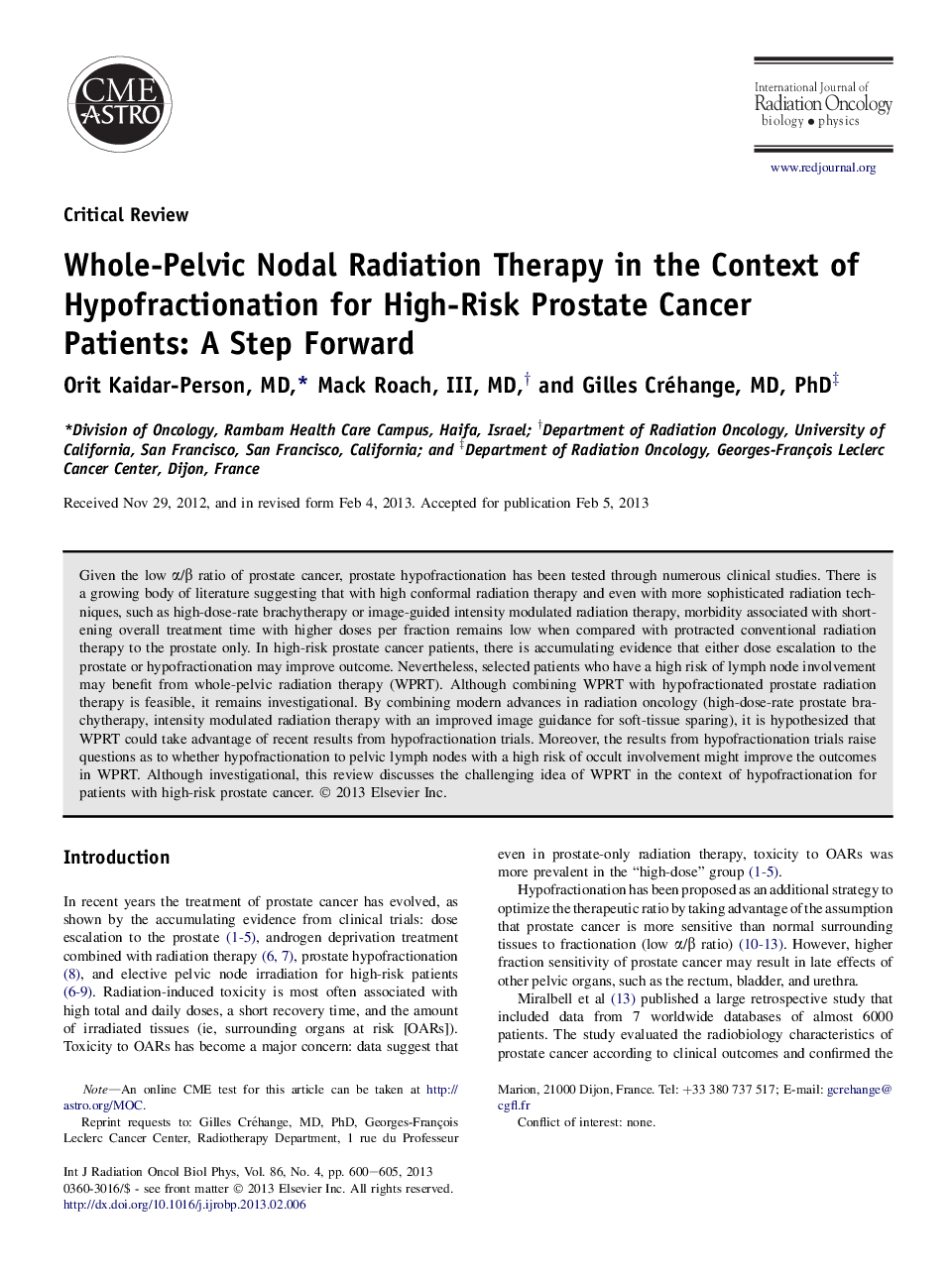| Article ID | Journal | Published Year | Pages | File Type |
|---|---|---|---|---|
| 8222211 | International Journal of Radiation Oncology*Biology*Physics | 2013 | 6 Pages |
Abstract
Given the low α/β ratio of prostate cancer, prostate hypofractionation has been tested through numerous clinical studies. There is a growing body of literature suggesting that with high conformal radiation therapy and even with more sophisticated radiation techniques, such as high-dose-rate brachytherapy or image-guided intensity modulated radiation therapy, morbidity associated with shortening overall treatment time with higher doses per fraction remains low when compared with protracted conventional radiation therapy to the prostate only. In high-risk prostate cancer patients, there is accumulating evidence that either dose escalation to the prostate or hypofractionation may improve outcome. Nevertheless, selected patients who have a high risk of lymph node involvement may benefit from whole-pelvic radiation therapy (WPRT). Although combining WPRT with hypofractionated prostate radiation therapy is feasible, it remains investigational. By combining modern advances in radiation oncology (high-dose-rate prostate brachytherapy, intensity modulated radiation therapy with an improved image guidance for soft-tissue sparing), it is hypothesized that WPRT could take advantage of recent results from hypofractionation trials. Moreover, the results from hypofractionation trials raise questions as to whether hypofractionation to pelvic lymph nodes with a high risk of occult involvement might improve the outcomes in WPRT. Although investigational, this review discusses the challenging idea of WPRT in the context of hypofractionation for patients with high-risk prostate cancer.
Related Topics
Physical Sciences and Engineering
Physics and Astronomy
Radiation
Authors
Orit MD, Mack MD, Gilles MD, PhD,
